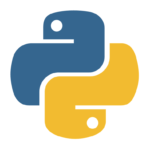How to Build a Chatbot have revolutionized the way businesses interact with their customers. These AI-powered virtual assistants can handle inquiries, provide information, and even engage in conversations, making them an invaluable tool for any organization. In this article, we’ll delve into the world of chatbots and guide you through the process of building one from scratch. Whether you’re a business owner looking to enhance customer support or a developer interested in the mechanics, we’ve got you covered.
Chapter 1: Understanding Chatbots
What Is a Chatbot?
Before we dive into the construction, let’s get a clear understanding of what a chatbot is. It’s an AI program designed to simulate human conversation and provide automated responses.
Types of Chatbots
There are two main types of chatbots: rule-based and AI-powered. We’ll explore the differences and when to use each type.
Chapter 2: Planning Your Chatbot
Define Your Goals
Start by defining the purpose of your chatbot. Is it for customer support, lead generation, or something else?
Target Audience
Identify your target audience and understand their preferences, needs, and pain points.
Chapter 3: Building the Chatbot
Choose a Platform
Select a chatbot development platform that suits your requirements. Popular options include Dialogflow, Chatfuel, and Microsoft Bot Framework.
Design Conversational Flows
Map out the conversation flows your chatbot will have with users. Think of it like scripting a play.
Chapter 4: Developing Your Chatbot
Scripting Responses
Create a database of responses and program the chatbot to provide relevant answers based on user queries.
Integrating AI
For AI-powered chatbots, integrate natural language processing (NLP) and machine learning algorithms to improve responses.
Chapter 5: Testing and Optimization
User Testing
Test your chatbot with real users to identify issues and refine its responses.
Continuous Improvement
Chatbots require constant updates to remain effective. Regularly analyze user interactions and feedback.
Chapter 6: Deployment
Choose a Channel
Decide where your chatbot will be deployed – website, social media, messaging apps, or all of the above.
Monitor Performance
Keep an eye on your chatbot’s performance using analytics tools and make necessary adjustments.
Chapter 7: User Experience
Personalization
Implement personalization features to make the chatbot feel more human and user-centric.
Feedback Loops
Create feedback loops to collect user feedback and improve the chatbot’s performance.
Conclusion
How to Build a Chatbot can be a game-changer for your business. It enhances customer engagement, streamlines support, and operates 24/7. By following the steps outlined in this guide, you can create a chatbot that not only meets your business goals but also provides an excellent user experience.
Get started with your chatbot journey today, and witness the transformation it can bring to your organization.
FAQs
1. Are chatbots only for big businesses?
Chatbots can be beneficial for businesses of all sizes. Small businesses can use chatbots for basic customer support, while larger enterprises can leverage them for various tasks.
2. Do I need coding skills to build a chatbot?
No, you don’t need advanced coding skills. Many chatbot development platforms offer no-code or low-code solutions for creating chatbots.
3. How do I make my chatbot more conversational?
You can make your chatbot more conversational by using natural language processing (NLP) and crafting engaging conversation flows.
4. What are some popular chatbot platforms?
Some popular chatbot development platforms include Dialogflow, Chatfuel, and Microsoft Bot Framework.
5. Can chatbots replace human customer support agents?
Chatbots can handle routine inquiries and tasks, but they may not completely replace human agents. They can work together to enhance customer support efficiency.



